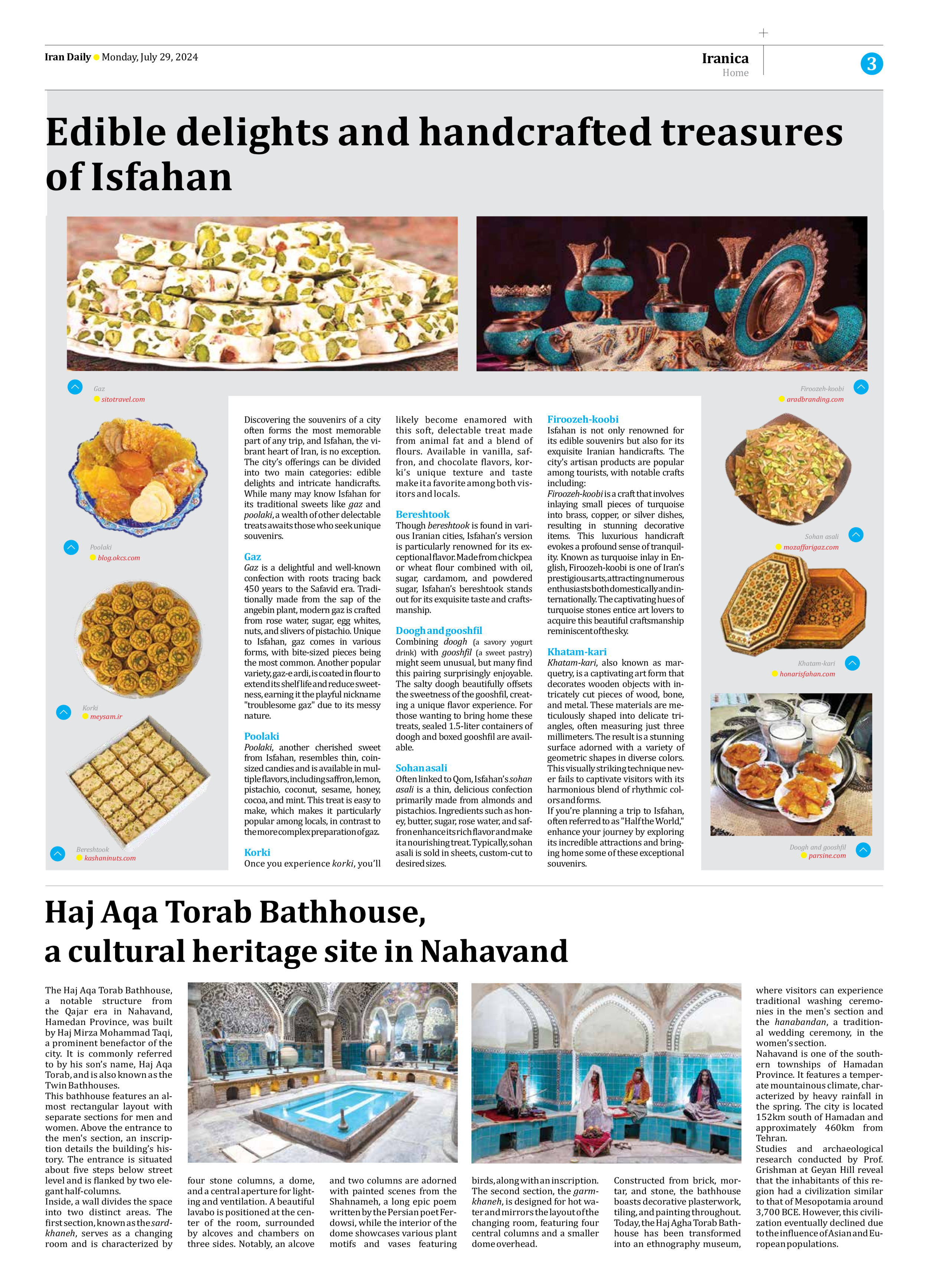
Copy in clipboard...
Haj Aqa Torab Bathhouse, a cultural heritage site in Nahavand
This bathhouse features an almost rectangular layout with separate sections for men and women. Above the entrance to the men's section, an inscription details the building’s history. The entrance is situated about five steps below street level and is flanked by two elegant half-columns.
Inside, a wall divides the space into two distinct areas. The first section, known as the sardkhaneh, serves as a changing room and is characterized by four stone columns, a dome, and a central aperture for lighting and ventilation. A beautiful lavabo is positioned at the center of the room, surrounded by alcoves and chambers on three sides. Notably, an alcove and two columns are adorned with painted scenes from the Shahnameh, a long epic poem written by the Persian poet Ferdowsi, while the interior of the dome showcases various plant motifs and vases featuring birds, along with an inscription.
The second section, the garmkhaneh, is designed for hot water and mirrors the layout of the changing room, featuring four central columns and a smaller dome overhead.
Constructed from brick, mortar, and stone, the bathhouse boasts decorative plasterwork, tiling, and painting throughout. Today, the Haj Agha Torab Bathhouse has been transformed into an ethnography museum, where visitors can experience traditional washing ceremonies in the men's section and the hanabandan, a traditional wedding ceremony, in the women’s section.
Nahavand is one of the southern townships of Hamadan Province. It features a temperate mountainous climate, characterized by heavy rainfall in the spring. The city is located 152km south of Hamadan and approximately 460km from Tehran.
Studies and archaeological research conducted by Prof. Grishman at Geyan Hill reveal that the inhabitants of this region had a civilization similar to that of Mesopotamia around 3,700 BCE. However, this civilization eventually declined due to the influence of Asian and European populations.







